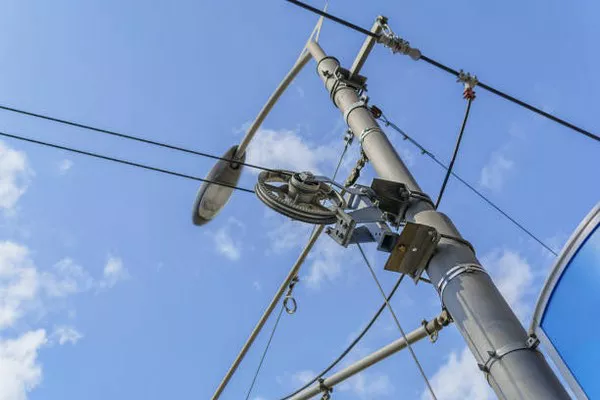Transformers are ubiquitous in modern electrical systems, serving as crucial components in the transmission and distribution of electrical energy. Among the various types of transformers, the step-up transformer plays a pivotal role in increasing the voltage of electricity. In this article, we will delve into the inner workings of a step-up transformer, exploring its principles, construction, and applications.
Basics of Transformers
Before delving into the specifics of step-up transformers, it is essential to grasp the fundamental principles of transformers. Transformers are electromagnetic devices that transfer electrical energy from one circuit to another through electromagnetic induction. They consist of two coils, typically wound around a common core, and are categorized into two primary types: step-up transformers and step-down transformers.
Step-Up vs. Step-Down Transformers
Step-Up Transformers: As the name suggests, step-up transformers increase the input voltage to a higher output voltage level. These transformers have more turns on the secondary coil than the primary coil, resulting in a higher voltage on the secondary side.
Step-Down Transformers: In contrast, step-down transformers decrease the input voltage to a lower output voltage level. These transformers have fewer turns on the secondary coil than the primary coil, leading to a lower voltage on the secondary side.
Components and Construction of a Step-Up Transformer
A step-up transformer consists of several essential components, each designed to perform specific functions. Understanding these components is key to comprehending how the transformer works.
A. Core:
The core of a transformer is typically made of laminated iron or other magnetic materials. It serves as a magnetic circuit, enhancing the efficiency of energy transfer between the primary and secondary coils.
The core’s design is crucial for minimizing energy losses due to hysteresis and eddy currents. Laminations reduce these losses by creating a path of lower resistance for magnetic flux.
B. Primary Coil:
The primary coil, also known as the primary winding, is the coil connected to the input voltage source. It consists of a specific number of turns of wire wound around one leg of the core.
When alternating current (AC) flows through the primary coil, it generates a magnetic field in the core, which subsequently induces voltage in the secondary coil.
C. Secondary Coil:
The secondary coil, or secondary winding, is connected to the load and consists of a different number of turns compared to the primary coil.
The induced voltage in the secondary coil is directly proportional to the turns ratio between the primary and secondary coils. A step-up transformer typically has more turns in the secondary coil, resulting in an output voltage higher than the input voltage.
Operation of a Step-Up Transformer
Understanding the operation of a step-up transformer involves grasping the principles of electromagnetic induction and the transformation of electrical energy.
A. Electromagnetic Induction:
Electromagnetic induction is the process by which a changing magnetic field induces an electromotive force (EMF) or voltage in a nearby conductor, as described by Faraday’s law of electromagnetic induction.
In a step-up transformer, alternating current in the primary coil creates a fluctuating magnetic field in the core. This changing magnetic field induces a voltage in the secondary coil.
B. Transformation of Voltage:
The voltage induced in the secondary coil depends on the turns ratio between the primary and secondary coils. Specifically, the ratio of secondary turns to primary turns determines the transformation ratio.
The transformation ratio is given by:
Transformation Ratio (K) = Ns / Np
Where Ns is the number of turns in the secondary coil, and Np is the number of turns in the primary coil.
For a step-up transformer, K is greater than 1, resulting in an output voltage (Vs) that is higher than the input voltage (Vp):
Vs = K * Vp
C. Ideal vs. Real Transformers:
In an ideal step-up transformer, energy transfer would occur with perfect efficiency, and there would be no energy losses. However, real transformers have inherent losses, such as copper losses in the windings and core losses due to hysteresis and eddy currents.
These losses are typically minimized through careful design and selection of materials, but they can never be completely eliminated.
Applications of Step-Up Transformers
Step-up transformers find widespread applications in various industries and sectors due to their ability to increase voltage levels efficiently. Some notable applications include:
A. Power Transmission:
Step-up transformers are used in power generation plants to increase the voltage of electricity generated before it is transmitted over long distances through high-voltage transmission lines.
Higher voltage reduces energy losses during transmission, making power distribution more efficient.
B. High-Voltage Testing:
Step-up transformers are employed in laboratories and industries for high-voltage testing of electrical equipment, such as insulation testing of cables and transformers.
These transformers provide the necessary high voltages for rigorous testing and quality control.
C. X-ray Machines:
Medical X-ray machines use step-up transformers to generate the high voltage required to accelerate electrons and produce X-rays for diagnostic imaging.
The step-up transformer increases the voltage supplied to the X-ray tube, enabling the generation of high-energy X-rays.
D. Microwave Ovens:
Microwave ovens utilize step-up transformers to increase the voltage supplied to the magnetron, a device that generates microwave radiation for cooking food.
The higher voltage allows the magnetron to produce the required microwave frequency efficiently.
Conclusion
In summary, step-up transformers are essential electrical devices that play a vital role in raising voltage levels for various applications. By harnessing the principles of electromagnetic induction and carefully designed coils, these transformers efficiently transform electrical energy. While they are subject to some inherent energy losses, their numerous applications in power transmission, testing, medical equipment, and consumer appliances highlight their critical role in modern society. Understanding the inner workings of step-up transformers is crucial for engineers and technicians working in industries that rely on electrical energy transformation.

